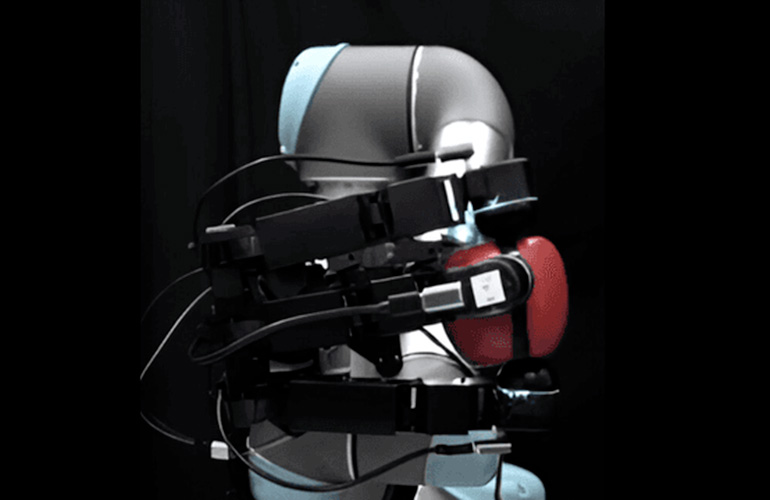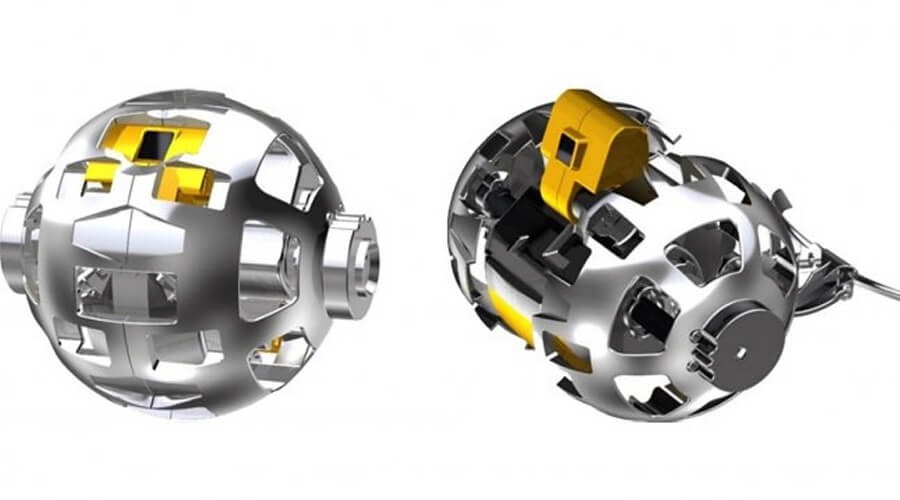Step into the future of urban logistics with LEVA—a cutting-edge cargo robot that autonomously picks up and delivers heavy loads without human intervention. Developed by a collaborative team from ETH Zurich, Zurich University of Applied Sciences, and Zurich University of the Arts, LEVA’s innovative blend of legged mobility and wheel-driven efficiency is set to revolutionize the way we manage package delivery.
A New Era in Robotic Delivery
In today’s rapidly evolving world, the demand for efficient and autonomous logistics solutions has never been higher. Enter LEVA—a multi-terrain cargo robot that combines the agility of jointed legs with the speed and efficiency of motorized wheels. Named after the Latin word "levitas" (meaning lightness or levitation), LEVA is designed to handle everyday urban challenges by autonomously moving heavy cargo across complex environments. Unlike traditional delivery robots that rely on humans for loading and unloading, LEVA can independently locate, lift, and transport cargo boxes weighing up to 85 kg (187 lb).
Innovative Design: Combining Legs with Wheels
LEVA’s pioneering design sets it apart from the conventional delivery bots on the market. It features four jointed legs, each ending in a motorized wheel. This hybrid system provides LEVA with unique mobility:
Smooth Surface Efficiency: When traveling on flat, smooth surfaces such as sidewalks or indoor floors, LEVA rolls on its wheels like a compact vehicle, conserving energy and ensuring rapid transit.
Adaptive Terrain Navigation: When encountering stairs, curbs, or other obstacles, LEVA seamlessly transitions to a walking mode. By locking its wheels and flexing its legs, it climbs stairs and navigates uneven terrain much like a four-legged animal.
Omnidirectional Movement: Thanks to independently steerable wheels and a versatile chassis, the robot can shift laterally, rotate, or move diagonally, allowing for precise positioning in tight spaces.
How LEVA Tackles Cargo
The key to LEVA’s functionality lies in its sophisticated cargo-handling system. The robot is equipped with multiple sensors—including GPS, LiDAR, and a suite of five strategically placed cameras—that work together to provide a 360-degree view of its surroundings. Here’s an overview of its operational cycle:
Autonomous Navigation: Using real-time data from its sensors, LEVA navigates urban environments, identifies optimal routes, and avoids obstacles along the way.
Cargo Identification and Alignment: Once LEVA detects a cargo box (designed in the standard Euro format), it precisely aligns itself over the package, thanks to its omnidirectional mobility.
Cargo Pickup: The robot then lowers its body by flexing its legs. Internal powered hooks deploy and latch onto the top of the box, securely capturing the load.
Transport and Delivery: After lifting the cargo, LEVA rises back to its adjustable rolling height (ranging from 0.6 m to 0.9 m) and proceeds to deliver the package to the intended destination.
This intelligent sequence requires minimal human intervention, showcasing how advanced robotics can streamline logistics operations.
Benefits of LEVA in Urban Delivery and Beyond
LEVA’s revolutionary approach to cargo transport is set to offer significant benefits across multiple sectors:
Enhanced Efficiency: By managing the entire pick-up and delivery process autonomously, LEVA decreases turnaround times and enhances overall productivity.
Reduction in Labor-Intensive Tasks: With LEVA handling the heavy lifting and movement of cargo, businesses can reduce their reliance on manual labor. This technology allows you to hire a robot to take on the monotonous and physically demanding aspects of logistics, freeing up human workers for more complex tasks.
Improved Safety and Hygiene: In environments like warehouses, hospitals, and retail centers, reducing human contact with heavy or hazardous materials minimizes the risk of injury and contamination.
Scalable Automation: LEVA represents a scalable solution for industries ranging from e-commerce to construction, offering a glimpse into the future of robot worker integration. This breakthrough not only creates new robots jobs but also provides the perfect job for robot in an increasingly automated world.
The Road Ahead: Future Prospects and Integration
Although still in the prototype phase, LEVA is already generating excitement among industry experts and urban planners. As testing continues and refinements are made, LEVA is expected to be deployed in various real-world settings—from busy city streets and logistical hubs to sprawling warehouses. Its ability to seamlessly transition between modes of locomotion opens up a world of possibilities for next-generation delivery solutions.
With advancements in autonomous navigation and cargo handling, the potential applications of LEVA are vast. Future developments may include integration with centralized logistics platforms, enhanced AI for route optimization, and even cooperative operations where multiple robots work in tandem to handle large-scale delivery challenges.
Conclusion
LEVA stands as a testament to the convergence of robotics, advanced sensor technology, and innovative engineering. By autonomously lifting, delivering, and handling heavy cargo, it marks a pivotal shift in how we envision urban logistics and delivery systems in the 21st century. As companies and industries continue to explore ways to hire a robot for complex logistical tasks, the emergence of LEVA heralds not just improvements in operational efficiency but also the creation of new, exciting robots jobs that will shape the future of work.
For more on cutting-edge robotics innovations and emerging technologies, visit JOBTOROB.


















